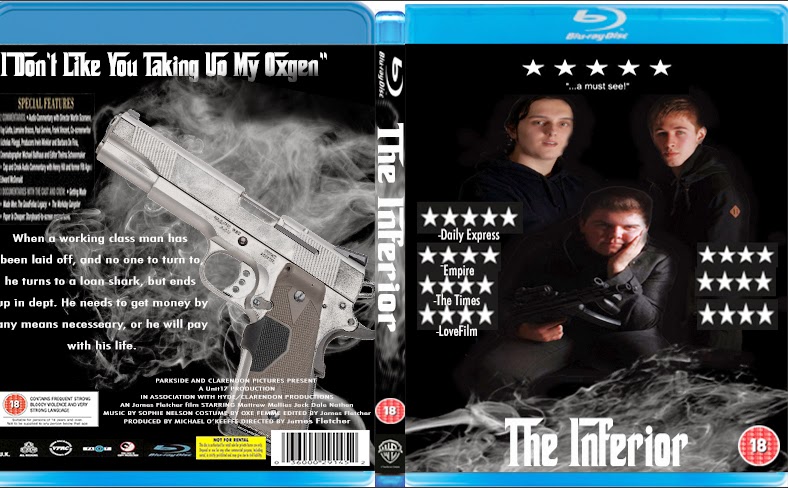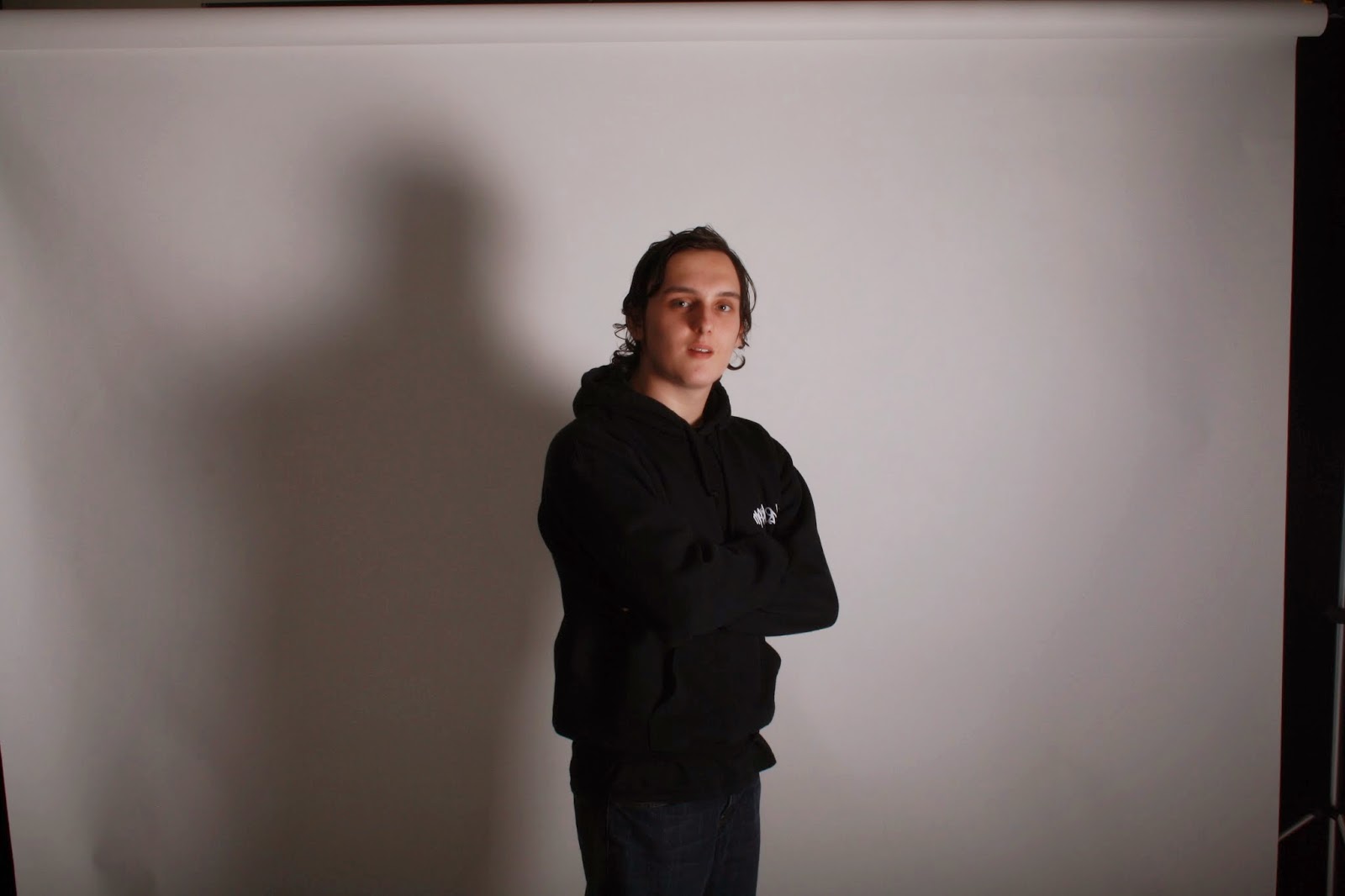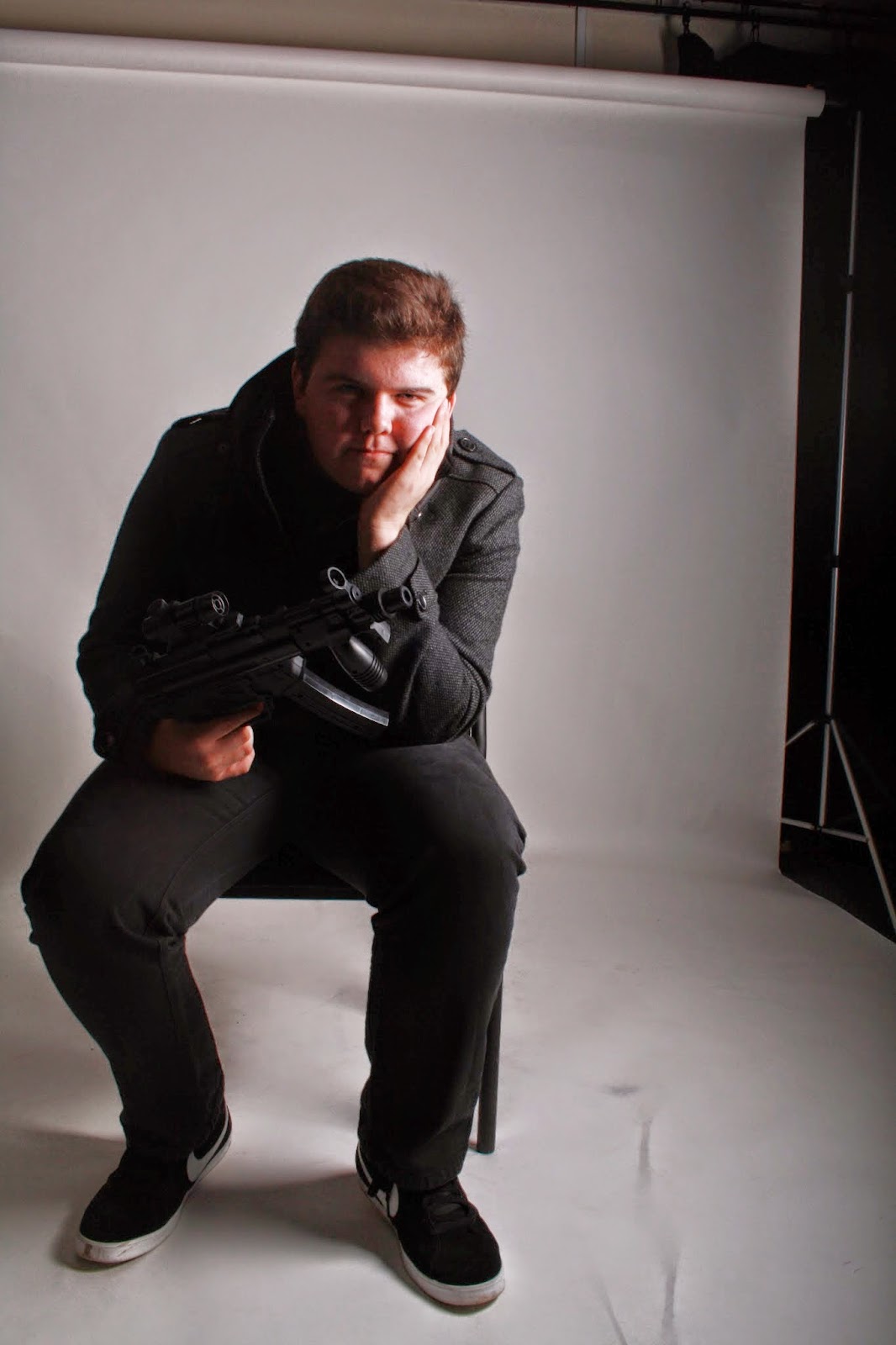For my creative media graphics sector, I was given the task to create a DVD or Blu-ray sleeve, using our posters as the front cover. I took several stages to achieve this task. Which I will describe and explain in this evaluation.
Final Product:

Step 1:
For the first step of this task, I screened shot an image of a blu-ray case and cropped the image so I only had the top of the case. I then opened this file into photoshop. I open this in the first layer of photoshop because the image did not need as manipulated as the other images were.
Step 2:
Now I had Photoshop opened up, I created a new layer and placed in my film poster. Then I removed the blurb, name tags and production logo. I did this because on DVD's and Blu Ray sleeves the credits and found on the back cover and the actors names are commonly found on the back sleeve as well, this maybe because the audience for this home media product is easier to sell to an audience than the cinema tickets for the film, because chances are they have already seen the film or heard about through word of mouth and advertisements. And the film decreases in value after multiple viewings, where as in the cinema, they would pay more because they are not just paying for a film, but a social event.
Step 3:
The third step of this task was to create a spine for my Blu-ray sleeve. I research the measurements online, and then applied them into Photoshop.
I found a image of a blank Blu-Ray sleeve online, I made a screenshot of the top and the bottom of the spine. I then added the images into a new layer, which was on top of the background layer.
I added a new layer which I added the Blu-Ray logo, which I located at the top of the spine, which the logo is usually found on real Blu-Ray sleeves.
After adding the Blu-Ray logo I added a new layer, and inserted an image of CGI (Computer generated imagery) smoke. The smoke was used to give a mysterious theme, which would represent the films Crime/Drama genre. Similar smoke effects are found on other gangster film such as 'The Godfather'
Then I added the BBFC 18 certificate onto the next layer. I used the magic wand tool to remove the original white background from the image and opened it into a new layer above the previous images on the spine file.
After placing the BBFC certificate my next task was to add a production logo, for this I chose the warner brothers logo. I downloaded the image off Google and opened the file into Photoshop. I then used the magic wand tool to edit out the background and moved the edited image into the layer with the rest of my Blu-Ray spine.
The third task in this activity was to create the back cover of the Blu-ray sleeves. I have used the same measurements fro my front cover which I researched on this website
http://www.cd-info.com/packaging/blu-ray-cases/
The first task was to add the top and bottom layers of packaging, for this activity I have taken a screenshot online and have reopened the file into Photoshop.














